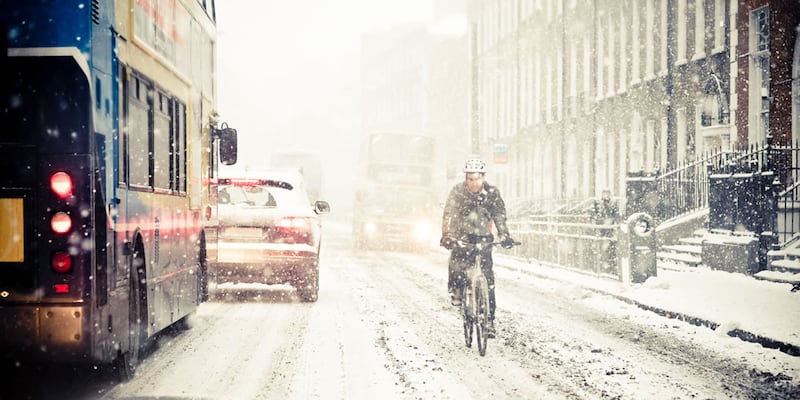Weather has been ever-present in our lives for a week, filling every front page, every bulletin. Occasionally, a voice is raised to wonder what all this fuss is about. It’s only weather, after all.
So, is this just the case of the “snowflake” generation meeting real snow? To find an answer, we need to understand our changing attitude to weather and risk from severe weather such as that of 1982 – and the changes in technology that happened since.
For decades, Met Éireann issued two warnings. The first of these, "Weather Warnings", were issued to local authorities only, to help them prepare. The second, "Severe Weather Alerts", were sent to RTÉ, then the only broadcaster in town.


Given the state of meteorological science, such warnings were typically issued with very short lead-times – sometimes just a few hours. They gave little opportunity to plan and prepare. Since then, however, a quiet revolution in weather forecasting has occurred.
Forecasts can now be made six or seven days ahead, as happened with both Storm Ophelia and now with Storm Emma, allied to improvements in Met Éireann’s warnings systems, in tandem with other European countries.
Storm naming
Severe weather alerts became Status Red (take action), Weather Warnings became Status Orange (be prepared), and a new category, Status Yellow (be aware), was introduced for lower levels of severity.
Storm naming was introduced. The names and the colour-codings were intended to improve warning communications, ending the ambiguity caused by technical language and no longer requiring the public to know what a wind gust of 130km/h means.
While Met Éireann was getting better, so, too, was Irish emergency planning: emergency co-ordination groups were created nationally, and locally, while the role of the principal emergency response agencies was clarified.
Risk-taking
And then there’s risk-taking. Across the world, different societies and cultures exhibit very different attitudes to risk-taking. The Japanese are extremely risk-averse. Faced with the threat of natural hazards, such as storms and earthquakes, they lay down well-established emergency plans and Japanese citizens routinely involve themselves in exercises.
Weather forecasting has moved from trying to lay down a “deterministic” view of predictions, where only one outcome is possible to a “probabilistic” view (where a number of possible evolutions are recognised, with a probability attached to each).
Assessing risks
Living rationally, accepting uncertainty and risk, is not easy. It means constantly assessing risks, taking decisions and accepting consequences, even though at times you made the “right” or logical decision but got the “wrong” result.
Professional gamblers, fund managers and actuaries all understand this. So, too, have weather forecasters. If Irish society’s view of risk has changed, then the question arises: who becomes responsible for managing that risk – the State or the individual? How should responsibility be divided?
Today, forecasters try to consider not just the severity of the storm, but of the impact the storm could have on society by taking three factors into account: the natural hazard itself (meteorological, hydrological, geological…), the vulnerability and the exposure.
Storm Ophelia offered a good example. The natural hazard was the strength of the wind. The specific vulnerability highlighted was the presence of trees, many still in leaf, lining Irish roads. The key to reducing risk was to reduce the exposure of people on the road.
The Government advised people to stay at home for the day of Ophelia, advice that undoubtedly reduced the risk of death or injury. Sadly, it did not eliminate it completely. Responsibility for safety was effectively shared between State and individual.
Natural hazards
So where does Ireland stand with regard to risk from natural hazards? Despite our increased focus on personal safety, we are unlikely to decree or force specific personal behaviours, but will rely on clear advice from government.
Such an approach requires credible, authoritative forecasting. Weather warnings drive behaviour. Thus the key role of National Meteorological Services, one enshrined in legislation in many countries.
The Irish public must invest significant trust in the organisation and the individuals who front up for it, and must also know and understand the appropriate actions and behaviours that will minimise risk.
Society is becoming more risk-aware, not more risk-averse. With climate change, Ireland may be exposed to new and different weather patterns, forcing us to continually recalibrate our understanding of risk.
This sophisticated approach to risk requires a numerate society, which causes challenges for Ireland’s schools. Living rationally, in the full understanding of uncertainty, is not easy.
Gerald Fleming retired last year from Met Éireann







